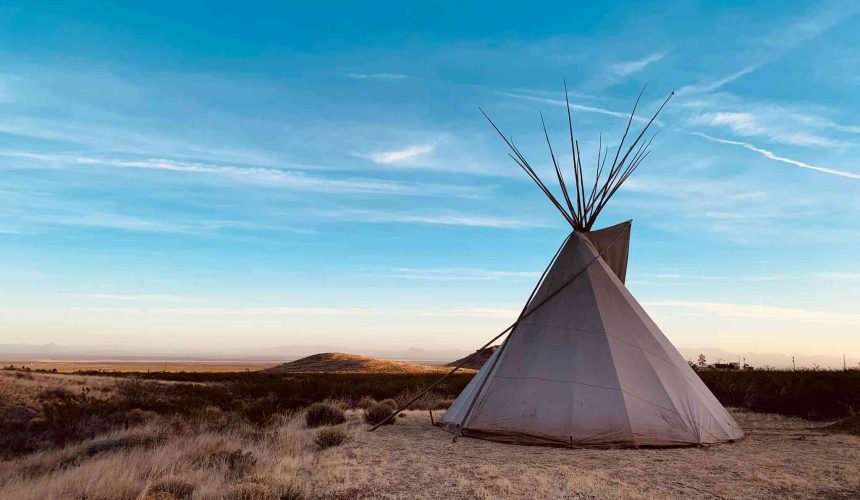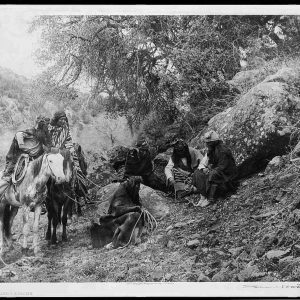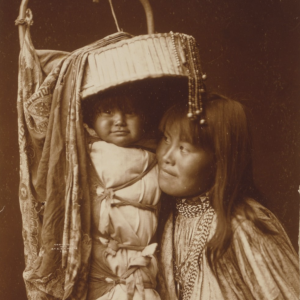Diamond Mountain Acknowledges Original People

We acknowledge that we are on
traditional, ancestral lands of the Apache People.
We pay our respects to the Elders and all Apache People,
both past and present,
who were keepers of this land for countless years
before the arrival and seizure by more recent settlers in the mid-1800s.
Diamond Mountain acknowledges the nomadic People of the Apache Tribes
who came from all directions
throughout what is now the southwest United States and northern Mexico,
who stayed here regularly
for the abundant food and medicinal herbs
that grow on these hillsides,
and for the rare desert waters
that still flow from Bear Springs.
We acknowledge that the modern history
of these Apache lands has been stained
with devastating treatment by American immigrants
and a lack of friendship and respect
for the Apache People who call this land their home.
We Dedicate these Acknowledgments
to seeing equal access to the land, fairly shared resources,
abundance, good health and long lives.
We Dedicate these Acknowledgments
to the happiness and freedom from suffering
for all beings in all worlds.
This acknowledgment statement was created in consultation with Indigenous Families who have lived here continuously for generations. We thank Manny and Rose Medina of the Chiricahua Apache, Cranston Hoffman, Marlowe Cassadore and Tia Early of the San Carlos Apache, and Kevin and Lulu Yuzos of the Mescalero Apache for their contributions to this place.

Story telling, 1906
Why is Diamond Mountain Acknowledging Land and Indigenous People?
At Diamond Mountain, we put into action what we learn in Buddhist scriptures. In order to see transformations towards peace and happiness, we work to clear collective past harmful actions and get beyond the obstacles they created. While past collective actions can define our current situation, acting individually with kindness and compassion, we’ve learned that we can indeed purify those results and see a sweeter world.
As part of the process, Diamond Mountain acknowledges those actions with a more truthful telling of local history in order to apply remedies and promote compassion with all People and Lands in all worlds; it’s helpful to learn about our obligations and opportunities as guests in this territory.
About the Apache People who call themselves Nde, The People
The Apache are southern Athabaskan-speaking peoples who migrated more than 100 centuries ago from the subarctic to the southwestern region of what would become the United States and Mexico. The People settled in southeastern Arizona, southwestern New Mexico, and northern Sonora and Chihuahua. They seasonally migrated across millions of acres of open deserts, through mountain ranges and valleys. They lived in small nomadic groups and harvested foods from the abundant and diverse ecosystems found throughout the region.
There are 5 related groups of Apache who lived and traveled throughout the Southwest, which we will name and honor here now.
- Chiricahua Apache are made up of four bands:
- Chihende, Red Paint People, Warm Springs Apache
- Chukunende, Ridge of the Mountainside People, Chiricahua Apache
- Nde’ndai, People Who Make Trouble, Sierra Madre Apache
- Bidánku, Standing in Front of the End People, Gila Apache
- San Carlos Apache
- Mescalero Apache
- White Mountain Apache
- Western Apache

Apache girl and papoose, 1903
The military operations orchestrated for 32 years from next door to Diamond Mountain at Fort Bowie were heavily manned and armed, committing genocide against a small group of families running for their very lives. This land and the entire region which the Apache called home was soon taken away through hundreds of land treaties negotiated and then broken by the US military’s generals Crook and Miles.
Knowledgeable in how to live in the desert, a few survived the slaughter while led by an Apache man whose family had been murdered; he later became known as Geronimo. The remaining Apaches were moved by train from the town of Bowie and on to Oklahoma and Florida, where the families were separated and put into Prisoner of War Camps called reservations. A few remained at the reservation in San Carlos north of Safford.
Beyond Acknowledgment
To what extent are our events and activities benefiting the land and the honoring of past peoples? At Diamond Mountain we have on-going Four-Step Plans to correct the harm done to the Indigenous People and to the Land by generations before us. Several of these programs were developed and are maintained by local Native Americans:
- Support of traditional religious Apache Consecrated Grounds with on-going Apache prayers and ceremonial dances
- Expanded Buddhist offering ceremonies honor local and ancient spirits
- Reforestation and restoration of natural habitat
- Renewed vegetation brings and holds water, as well as replenishes and rebuilds soil
- Development of a Native American Medicine Wheel, an herbal medicinal garden
When you visit Diamond Mountain, please speak a prayer of gratitude to the Apache People upon whose land we are guests. As guests and Buddhist scholars, we will continue to implement karmic-driven community building and land restoration, and honor leaders and all members of the Native American People.
Please contact us at admin@diamondmoutain.org if you would like to participate with us on any of these historical remedial projects, either financially or as a volunteer.
Bibliography
Morris E. Opler
An Apache Life-Way, The Economic, Social, & Religious Institutions of the Chiricahua Indians
University of Chicago Press, 1941, reprinted with an introduction by Charles R. Kaut, University of Nebraska Press, 1996
Smithsonian Handbook of North American Indians, Volume 10
Charles C Royce and Cyrus Thomas
Indian land cessions in the United States. 1899
Maps and lists of treaties
Edwin R. Sweeney
From Cochise to Geronimo: The Chiricahua Apaches, 1874-1886
University of Oklahoma Press, 2010
Dan L. Thrapp
The Conquest of Apacheria, University of Oklahoma, 1967
John Anthony Jr. Turcheneske
Historical Territory, Fort Sill Apache Tribe, 2003
More Information

